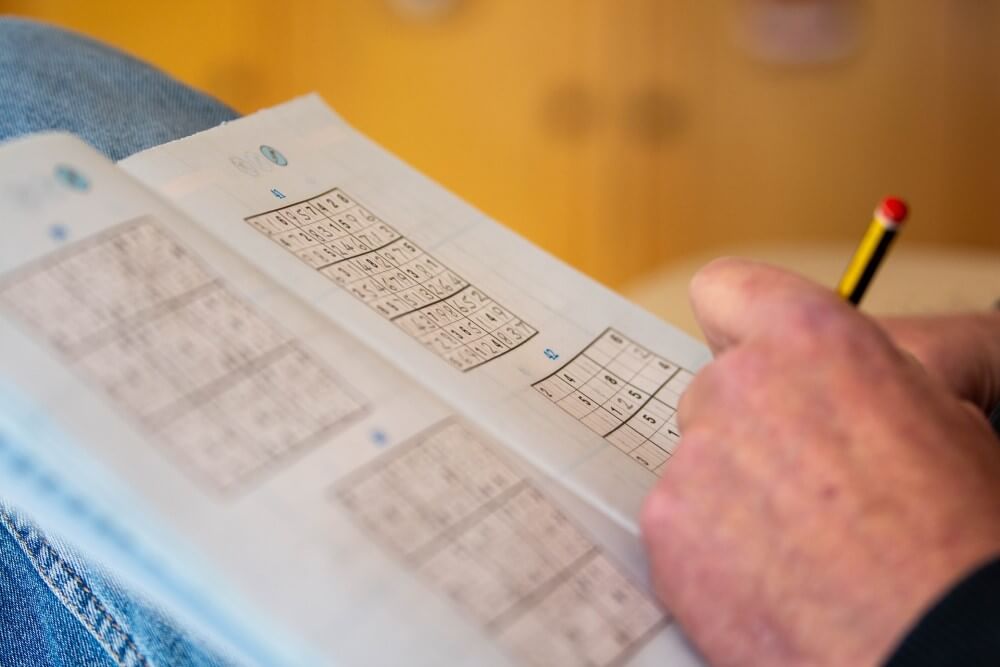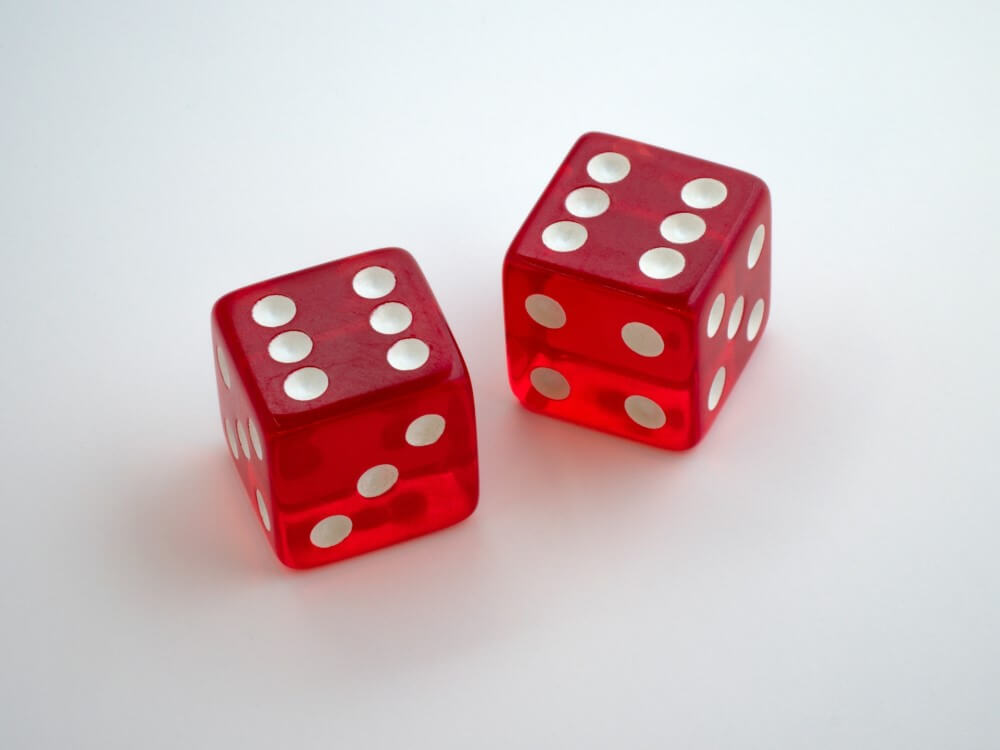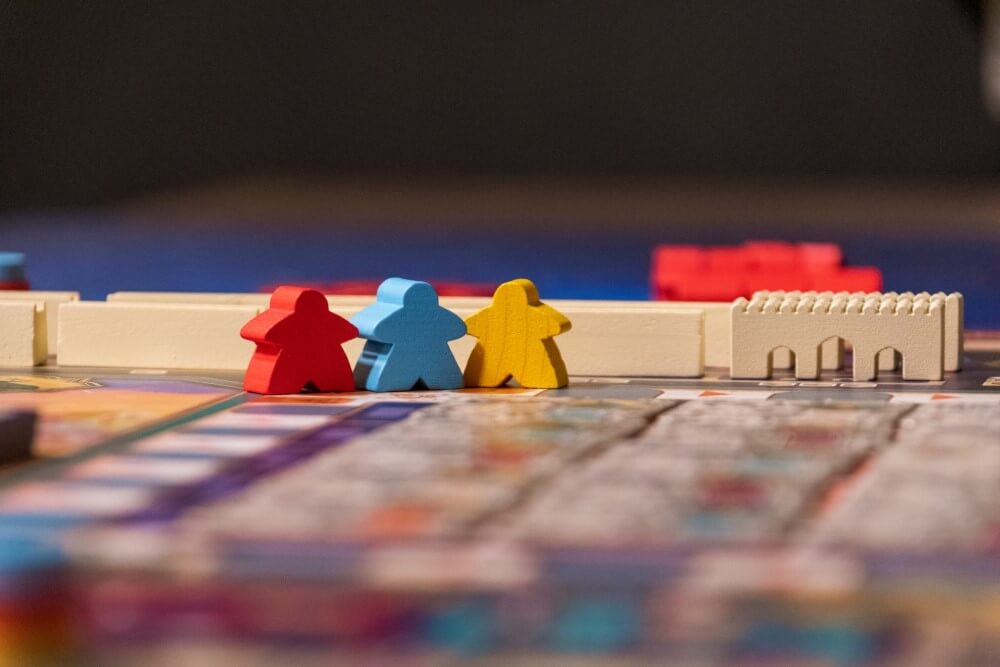- Life & Culture
9 Traditional & Modern Japanese Board Games (How to Play)
Japan is known for its rich gaming culture, and its tabletop and board games are no exception.
From ancient games of strategy to cutting-edge modern titles, Japanese board games combine tradition with innovation. Here are 9 popular games to try for yourself, plus how to play them!
5 Traditional Japanese Board Games
Shogi (Japanese Chess)
Also known as Japanese chess, Shogi is a two-player game and translates as ‘general’s board game’. Like chess, Shogi has a collection of pieces that move across a board in different ways:
- 1 king
- 1 rook
- 1 bishop
- 2 gold generals
- 2 silver generals
- 2 knights
- 2 lances
- 9 pawns
Like chess, Shogi is an intense game of strategy, where both players attempt to capture each other’s king. In Japan, it has been described as integral to Japanese culture as the haiku.
A key difference from chess is that instead of pieces being removed, in Shogi they can switch loyalties and return to the board. There’s also a bigger emphasis on promoting pieces compared to chess (like if a pawn is promoted to a Queen in chess) as more pieces can be promoted.
If you want to learn how to play this traditional Japanese board game, start with this video:
The board is a grid of 81 rectangles, while each player has 20 pentagonal pieces. Shogi pieces are flat and can be turned over, to show they’ve been promoted to a more powerful piece.
Shogi appears in a number of anime and manga series, including Naruto and Durarara!!.
First Played: 700s
Players: 2
Time to Play: < 2 hours
Sudoku
Gaining worldwide popularity in the early 2000s, you’ve probably tried a Sudoku puzzle.
A universally playable number game, Sudoku involves a 9 x 9 grid. The aim of the game is to arrange the numbers 1 to 9 in the grid, so that each column, each row, and each 3 x 3 ‘block’ of the grid contains the numbers 1 to 9. Sounds frustrating? Despite this, it’s immensely popular!
Studies have also shown that playing Sudoku can help improve and maintain brain function.
Sudoku puzzles can be played in various forms, including in newspapers (as a numerical alternative to crossword puzzles), as a video or mobile game, or as a physical board game.
Japan wasn’t the first place to invent Sudoku – a similar number puzzle first appeared in France in 1895 – but it became popular in Japan in the 80s, before spreading to other countries. Many Japanese people love doing puzzles on train commutes, making Sudoku a perfect solution.
First Played: 1979
Players: 1
Time to Play: < 1 hour

Japanese Mahjong
Also known as Riichi Mahjong, Japan’s spin on mahjong introduces unique rules to the original.
Mahjong is a tile-based game, played with 136 tiles. Players draw and discard tiles, with the goal of collecting a specific combination of tiles – such as a sequence or a set of the same tiles.
There are a few differences in Japanese Mahjong, creating a distinct variation on the game:
- You can declare ‘riichi’ if you’re ready to complete your hand, with one tile needed
- There’s a different ‘yaku’ scoring system for hands, with different combos scoring points
- A ‘dora’ is a bonus tile that adds value to certain tiles, which can influence gameplay
- There’s a difference between winning by self-draw or winning on a player’s discard
Japanese Mahjong is one of the most popular board games in Japan. There are millions of mahjong players, with the game being played in various anime and manga series. The game relies on both luck and the skill of the players, making it ideal for lovers of strategy games.
There are Riichi clubs and championships all around the world, as well as in Japan.
First Played: 1924
Players: 4
Time to Play: < 4 hours
Go (and Gomoku)
One of the oldest games in the world, Go was first played in China more than 2,500 years ago. Played on a gridded board with white and black stones, it has a dedicated following in Japan:
The aim of Go is to surround vacant space around your opponent’s stones and ‘capture’ them.
Many anime and manga feature Go, and Japan has a distinct enthusiasm for the game:
- Known as ‘Igo’, Go is elevated to an almost profound significance in Japan
- There is an emphasis on balanced, harmonious formations and strategic depth
- Gomoku is popular with kids and casual gamers, helping with pattern recognition
- There are minor differences in Chinese and Japanese rulesets e.g. scoring
There’s also a simplified version of Go (which can take hours if you’re a professional) called Gomoku. The aim of Gomoku is to form an unbroken line of 5 stones on the gridded board.
Traditional Japanese sets are beautiful works of art, using rare materials for the pieces.
First Played: 700s
Players: 2
Time to Play: < 2 hours
Sugoroku
A classic board game, Sugoroku dates back centuries. It’s often played on New Year’s Day.
Translated to English, Sugoroku means ‘two sixes’, which refers to the maximum number that can be shown on a pair of six-sided dice. There are two different versions of the board game:
- An earlier version called ‘ban-sugoroku’ is similar to the western game of Backgammon. It was a simple, luck-based game that was banned in Japan multiple times – due to it being well-suited for gambling! It’s almost obsolete, while Backgammon is still played.
- The version of Soguroku most people know is ‘e-sugoroku’, a game similar to Snakes and Ladders. Players take turns rolling dice, moving through locations or situations on a board. There are many variations, using scenes from myths, religion or pop culture.
This latter version of ‘picture’ Soguroku is popular with children and some versions are used as a learning tool. Certain rewards, challenges and instructions can make it almost a ‘Game of Life’.
Players progress along a winding path, with a mix of strategy and luck needed to win the game.
First Played: 500s
Players: 2
Time to Play: < 1 hour
Now we’ve described some of the oldest board games in Japan, here are some newcomers.

Modern Japanese Board Games
Tokyo Highway
A fantastically physical game, Tokyo Highway is a 3-D board game of balancing tiny roads and cars. It’s different every time, and only takes around half an hour to complete a full game.
The players first have to construct a roadway from columns of varying heights and sticks that serve as roads. It’s harder than it looks to create the highway, as you have to construct under and over your opponents’ structures. You need to place and balance your cars carefully too!
- The game starts with players placing columns of various heights
- Columns are then connected with sticks that serve as roadways
- If you place a road over or under another, you get to place a car
- If you go both over AND under a road, you get to place two cars
To win the game, you have to place 10 of your cars on roadways – with or without using tweezers. There’s an endless number of possible combinations with the wooden pieces.
Both strategy and care are needed to avoid collapses and win at Tokyo Highway.
First Played: 2018
Players: 2 – 4
Time to Play: < 1 hour
Iki
Fans of the history of Japan will love this rich board game, which harks back to the Edo period.
Taking place in the streets of old Tokyo, Iki centres around the huge Nihonbashi shopping district. The board is beautifully illustrated and the gameplay is complex, making it a modern classic.
In the game, you’re a noble who can hire artisans and shop vendors. There’s a wealth of different professions – from eel sellers to puppet masters – and the game alternates between hiring and shopping phases. You look after everything from interactions to ensuring your artisans are fed.
With multiple rounds, seasons and even the outbreak of fires, you control a delicate ecosystem.
Critics rave about Iki for its gameplay, with many hard choices for players. To be an Iki master, you must use the subtleties of human nature to your advantage and keep artisans thriving.
First Played: 2015
Players: 2 – 4
Time to Play: < 2 hours
Machi Koro
Published in 11 languages, Machi Koro is a popular modern board game from Japan.
You play as the mayor of Machi Koro – a fictional Japanese city. Each player rolls the dice to grow their town from a wheatfield to a thriving metropolis with a theme park, factories and more:
- Wheat Field Card – means you get one coin from the bank on anyone’s turn
- Shopping Mall Card – if activated, means your cafe and bakery cards earn extra coins
- Theme Park Card – if you have this card and roll doubles, take another turn
By collecting coins and cards in each round, you can construct landmarks and reap the rewards from them on each turn. Your roll of the dice can benefit your competitors as well as your own city, so there’s a luck element to the game as well as strategy – just hope your city is built first!
The game’s playful imagery and simple gameplay make it an ideal board game for families.
First Played: 2012
Players: 2 – 4
Time to Play: < 1 hour
Songbirds
Bird and board game fans will love this pretty game, which sees players acting as forest spirits, guiding their chosen bird to success. The game’s rules come in both English and Japanese.
The 28 cards used to play the game include 4 sets of 7 cards, showing 4 different breeds of songbirds doing different birdy activities. The bird designs are extremely charming – showing a mix of different breeds including a robin and a long-tailed tit – and it doesn’t take long to play.
To play the game, players take turns placing cards from their hand on a 5 x 5 grid until full.
Food tokens are also laid out on the grid, with the bird with the highest total in a line taking the token for that round. Songbirds is an ideal game for families as it’s easy to pick up and play.
First Played: 2016
Players: 1 – 4
Time to Play: < 1 hour
Conventions & Tournaments in Japan
If you’re a board game fan moving to Japan, you’ll find various conventions and clubs to join:
Game Market – a Japanese gaming convention with an emphasis on analogue games, such as board games and card games. It’s held three times a year, twice in Tokyo and once in Osaka.
Tokyo Game Show – although not exclusively for board games, you’re sure to find some at Japan’s largest gaming event. Play games, watch cosplay and make gamer friends for life.
Honibo Go Competition – love playing Go? See it played professionally for a ¥28 million prize, at a competition that’s been running since 1941. The games are played over two days.
Shogi Tournaments – both the JSA and LPSA (Ladies’ Professional Shogi-players’ Association of Japan) host tournaments for professional players. Fans of The Queen’s Gambit will enjoy.
World Riichi Championship – as well as the world championship, the WRC helps many grassroots communities who love playing Japanese Mahjong. Check out their local events.
As well as playing the games, you’ll find game-related figurines and merchandise at conventions. You can also find fan-made games and various indie game makers sharing their creations!
Although video games are much more popular, there’s an increasing market for board games.

Board Game Cafes & Shops in Tokyo
Many foreigners have set up board game cafes in Japan, and you can find cute independent places in larger cities. You’ll also find board game groups by using Meetup, with everything from traditional games like Shogi and Go, to western games like Catan and Dungeons & Dragons.
Tokyo is ahead of the curve, and there are multiple shops and cafes for tabletop gamers:
- Dear Spiele – Described as ‘a space where you can play and buy over 1300 board games from around the world’, this shop and cafe is a board gamer’s dream.
- Jelly Jelly Cafe – has ‘over 500 board games, including DiXit, Catan, Pandemic, Kakerlakenpoker, Geister, Doubutsu Shogi, Qwirkle, Liar’s dice, Stamps, Carcassonne, Domemo, Hey That’s My Fish!, Word Basket, Midnight Party, and more!’
- Yellow Submarine – with many stores in Japan, this popular chain caters for many hobbies – it has a focus on card games, but you’ll find plenty of board games too.
- Surugaya – you’ll find imports at good prices here, alongside second-hand games.
Japan Board Game FAQs
What makes Japanese board games unique?
With a fusion of tradition and innovation, Japan has some of the most interesting board games. From an emphasis on harmony and balance, to competitions hosted all around the country, Japanese board games are renowned for their interesting game mechanics and depth.
Although some Japanese board games are adapted from older games, Japan brings unique rules and gameplay, alongside the seriousness and enthusiasm shown at conventions.

Does pop culture inspire Japanese board games?
Another unique feature of Japanese board games is the visual influence of culture in Japan – you’ll find distinctive art styles taken from anime and manga, alongside more traditional paintings.
As mentioned above, you’ll see Japanese board games being played in anime and manga too.
How can I get involved in board games in Japan?
If you’re a foreigner living in Japan who is craving board games, you won’t be alone. By attending events, visiting shops, or joining a game on Meetup, you’re sure to find new friends to play with.
One way of getting involved with gaming in Japan is to become an Assistant Language Teacher (ALT) and teach English in Japan with Interac. Playing board games can be a great way to teach English to Japanese students – contact us to find out more, or apply to become an ALT now.
About the Author

Brian McDonough is a consultant at Interac, Japan’s largest provider of ALTs (Assistant Language Teachers). Originally from the US, Brian has lived in Japan for over 25 years, giving him a unique perspective on the cultural differences and challenges people face when moving to Japan. He has first-hand experience of working in Japan as an American.





